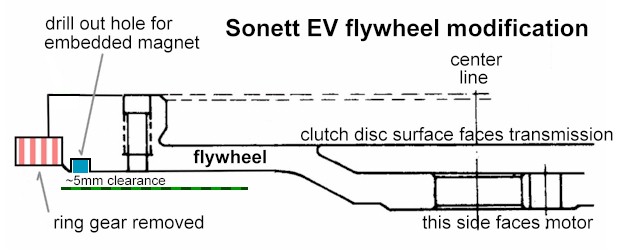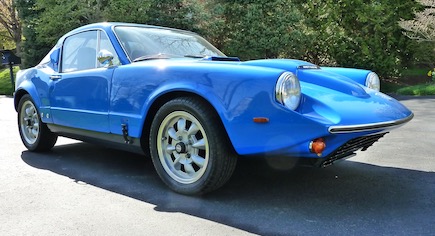Flywheel modification
The electric conversion of the 1969 Saab Sonett retains the OEM transmission, but the new electric motor does not use a separate starter, so the ring gear around the circumference of the flywheel that originally meshed with the starter gear is now redundant. To save weight, the ring gear was removed.
 Drawing of the flywheel modification shows ring gear removal and drilled magnet holes
Drawing of the flywheel modification shows ring gear removal and drilled magnet holes
In a gas-powered car, the tachometer typically uses the electric impulses from the distributor to measure engine speed in rotations per minute (RPM).
The digital replacement tachometer in the Sonett EV can be “spoofed” to display RPM by placing two opposing magnets on the outer edge of the flywheel. These magnets are read by an inductive proximity sensor that produces a small voltage spike when its head passes within a few millimeters of the magnet.
With two magnets 180 degrees apart, the sensor will register two pulses per rotation. The digital tachometer can be programmed to properly display RPM based on this pulse pattern.
The Cars
Porsche 356 Speedster

The iconic Porsche Speedster proved to be an excellent EV conversion candidate due to its low weight, relatively simple design, and ample front/rear compartments for mounting pristmatic lithium battery cells. Weight distribution was improved over the original rear engine configuration with better acceleration and overall performance.
Saab Sonett

The unusual fiberglass Sonett, originally powered by a Ford V4 engine, combines a low center of gravity and front wheel drive, optimal for our high performance EV conversion. Without the need to accomodate a long drive train, the space behind the two seats was used for additional batteries. The original four-speed transmission remains intact along with the braking system.